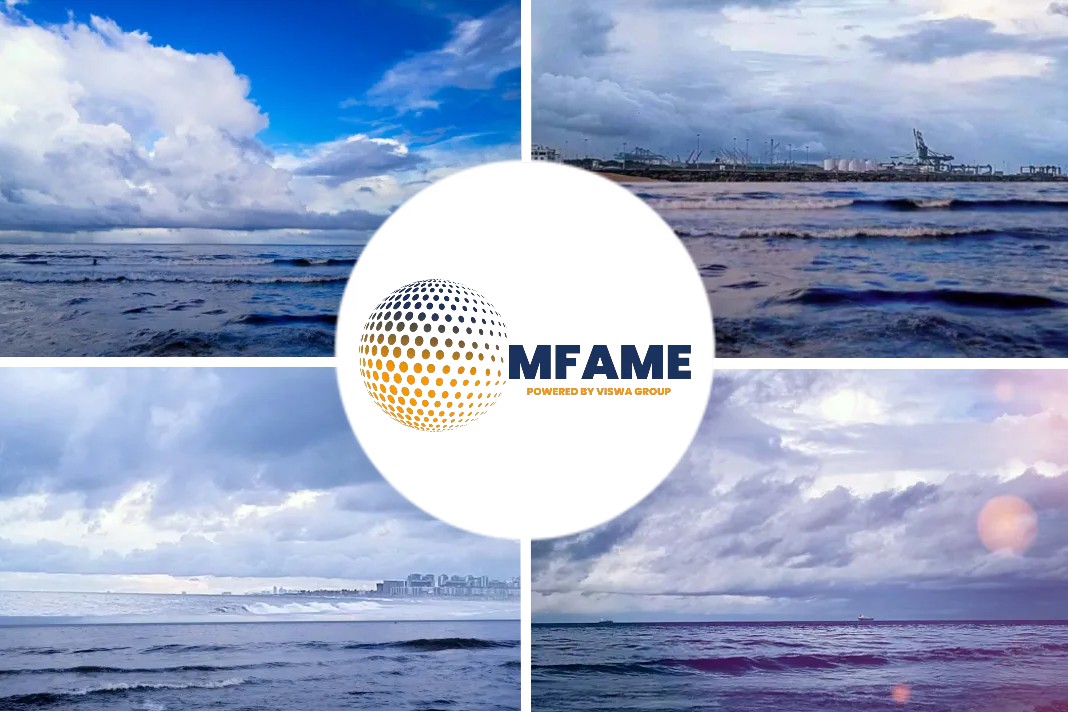LNG bunker spot prices in Rotterdam have overtaken the cost of low-sulphur fuel oil (LSFO), reports the Loadstar quoting Ship & Bunker data.
Spike in LNG prices
A substantial spike in LNG prices in the past few months, which some analysts regard as temporary, could be of some concern to ocean carriers already operating, or have ordered, LNG-powered containerships.
The marine fuel publication recorded Rotterdam-sourced very-low-sulphur fuel oil (VLSFO) at $518 per tonne yesterday, compared with the spot LNG equivalent at $846 per tonne.
LNG has a lower calorific value than fuel oil and so prices are not based on mass but on the amount of gas required to deliver the same amount of energy, and then converted for comparison with oil prices.
The cost of natural gas has surged in recent weeks, due to tight supply in Asia, with LNG bunker prices for Rotterdam pivoting from a $130 discount on VLSFO in March to a current premium of $328 per tonne.
Notwithstanding that ship bunkering procurement managers are unlikely be exposed to the spike in LNG prices due to their forward contracts, the volatility of gas prices is worrying for the shipping sector.
Will the price drop in future?
Meanwhile, in Asia a Reuters report at the weekend said LNG prices “are currently at their highest since January, and also at their highest for this time of the year, since at least 2010”.
The news agency added: “They are expected to climb further during the northern hemisphere winter when demand for LNG for heating typically surges.”
But Amsterdam-headquartered LNG marine supplier Titan LNG is optimistic that prices will fall back, and that ocean carriers opting for the fuel for their new ships should not be too concerned.
“It is important to understand that, although prices are currently very high, it will not affect the business case for LNG-fuelled vessels, as prices are expected to drop in the future,” Flip Dankelman, risk manager at Titan LNG, told Ship & Bunker.
In July the EU decided to include shipping within the its Emissions Trading System (ETS) carbon pricing legislation, which could eventually add up to $200 per tonne to the cost of heavy fuel oil (HFO).
“The recent legislation to add shipping under the ETS gradually from 2023 is yet another factor that supports the decision to run on LNG,” said Mr Dankelman.
ICS proposal for Carbon levy
More recently, the International Chamber of Shipping (ICS) has submitted a proposal, with Intercargo, for a global pricing mechanism that it says will not distort the market in the way the EU proposals will.
The ICS proposal is for a carbon levy, the amount of which has not been specified, to be attached to emissions and collected by the International Maritime Organization (IMO). It is not clear whether this would include methane emissions, a major greenhouse gas emission from LNG.
In its Sixth Assessment Report, published last month, the International Panel on Climate Change warned governments that the widespread emission of methane posed a serious threat to the world’s efforts to mitigate the effects of climate change.
LNG as an option for ocean carriers has gained momentum, with the gas regarded in many circles as a “transition fuel” towards the decarbonisation of shipping. However, if high gas prices persist, carriers may opt to switch to VLSFO, which most modern vessels can use in dual-fuel power plants.
According to the latest data there are some 50 containerships under construction that will be LNG-powered, including 34 ordered this year.
Choice of LNG ‘makes sense’
In June, after Hapag-Lloyd had confirmed its option for a further six LNG-powered 23,500 teu ULCVs (for a total order of 12 to be delivered in 2024), CEO Rolf Habben Jansen said the choice of LNG “made sense”.
The line saw fossil LNG “as a bridging fuel towards bio-methane or synthetic LNG, which these vessels would be ready to use”, he said. “We don’t see a very good alternative at this point in time, and it definitely is a step ahead compared with what we have today.”
Led by CMA CGM, the first major line to opt for LNG-fuelled vessels, most of the top carriers have lined up behind the gas as a transition fuel, with the exception of Maersk, which recently placed an order for eight methanol-powered 16,000 teu ships.
At the time of going to press, The Loadstar was unable to get an official reaction from carriers to the hike in LNG prices, but one liner contact suggested they were “watching the market closely”.
Did you subscribe to our daily newsletter?
It’s Free! Click here to Subscribe!
Source: The Loadstar



















